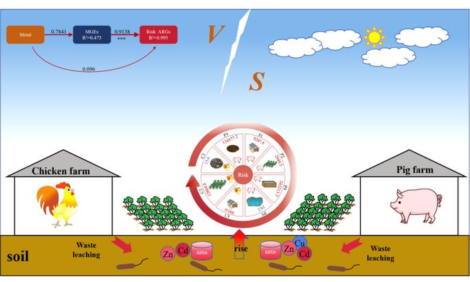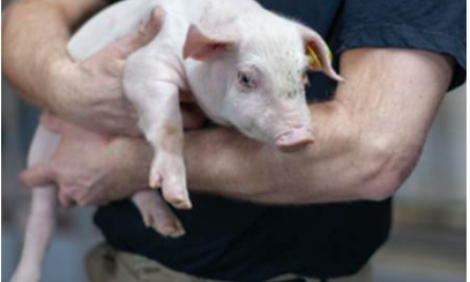



World Pork Trade Overview - November 2005
By USDA Foreign Agricultural Service - This article provides an overview of global pork trade predictions for 2003. The report covers the US, Brazil, China and the EU.2006: Another Year of Record Trade in Red and Poultry Meat Forecasted
Trade of beef, pork and poultry by major
exporters is forecast to reach record levels in
2006 despite the instability of continued disease
outbreaks and their resulting trade restrictions.
While avian influenza (AI) in Asia and Russia, foot
and mouth disease (FMD) in Brazil, as well as
trade restrictions on U.S. and Canadian beef due
to bovine spongiform encephalopathy (BSE) have
undoubtedly impacted global trade and will
continue to be a cause of concern, meat
consumption among major consuming countries
continues to climb spurring increased production
and growth in exports.
For the first time in history, broiler meat exports by
major traders are forecast to reach 7.5 million
tons. Poultry demand is expected to be strong
due to the absence of the United States in major
beef markets and constraints on growth in
Brazilian beef exports.
World Overview: Positive macroeconomic growth will continue to encourage investment and increase consumer demand.
World economic growth is expected to remain
strong throughout 2006, albeit at the same
level of 2005. The forecasted positive
economic environment will promote
investment in meat production and processing
capacity in many major livestock and poultry
producing countries. Producers and processors
in rising exporting countries are investing in a
range of capacity and quality improvement
projects such as the modernization and
construction of slaughtering plants in Brazil
and feedlot expansion in South Africa.
However, there are instances in which
economic growth will not be enough to
support production and processing growth. In
the case of the Indonesian poultry sector,
outbreaks of AI, escalating energy costs, weak
currency, and higher feed costs will minimize
profits and constrain growth in 2006.
Increases in worldwide real per capita GDP in
2006 will continue to fuel rising livestock and
poultry consumption and hence production.
Asian economies particularly China, Hong
Kong, Taiwan, and Thailand are forecast to
experience strong growth, likely fostering
meat consumption as consumers will have
more disposable income.
Red meat and poultry meat prices for major exporters influenced by disease related trade distortions .
During 2004 and 2005, outbreaks of AI and BSE caused trade distortions which affected major exporters’ (such as the United States and Brazil) poultry and beef prices. Consequently, major exporters’ pork prices increased in the last two years as exports mushroomed in the wake of consumers shifting their animal protein consumption.
Favorable exchange rate enables U.S. to remain price competitive.
A weak U.S. dollar has made U.S. exports of meat and poultry more competitive in world markets since 2003. Even though further depreciation of the U.S. dollar vis à vis competitor countries such as Brazil and Australia is not anticipated to continue in 2006, favorable exchange rates will give U.S. exports a competitive advantage.
FMD in Brazil will have minimal impact on current meat trade flows.
The October 2005 outbreak of FMD in Mato Grosso do Sul, Brazil will constrain growth in the Brazilian beef and pork sectors. Brazil will shift beef production to FMD-free states to meet export demand in 2006, particularly to Russia. Mato Grosso do Sul is not a major pork producing region and the impact on Brazilian pork exports is anticipated to be small. At the time these forecasts were generated, Mato Grosso do Sul was the only state with confirmed FMD cases.
Broiler meat exports to surpass beef exports by major traders.
For the first time in history, broiler meat exports by major traders are forecast to reach 7.5 million tons. Poultry demand is expected to be strong due to the absence of the United States in major beef markets and constraints on growth in Brazilian beef exports. The 2006 increase of nearly 7 percent is the result of increased trade by a number of countries including Argentina, Brazil, China , Thailand, and the United States.
Continued Strong Pork Production in 2006
Accounting for 76 percent of the major
producers’ increase forecast in 2006, China
will drive pork production for those
countries 3 percent higher in 2006 to just
over 95 million tons. China will continue to
dominate as the world leader with nearly 51
million tons of pork production. Increases
in pork production will occur in the
European Union and Russia in 2006.
Brazilian pork production will increase just
over 3 percent to slightly more than 2.8
million tons in 2006 as the FMD-impacted
region of Mato Grosso do Sul is not a major
pork producing region.
Pork production continues to benefit from its
role as a substitute for animal protein when
trade in beef and poultry declines due to
disease-related bans. Growth in pork
production and consumption in some
regions is due to substitution, while recent
export growth in the other regions such as
Mexico has been income driven.
Key Producers:
China:
Despite various obstacles, China’s
swine production has benefited from
efficiency gains due to improved breeds and
feed. This is reflected by increased imports
of breeding swine. Increasing percentages
of sow stocks compared to total inventory
will translate into continued strong swine
production in 2005 and 2006. Investment in
hog slaughter and pork processing has also
risen. Increased foreign investment through
joint ventures will continue to boost
efficiency and production.
European Union:
With inventories,
increasing, the 2006 pig crop is expected to
increase, especially in the New Member
States (NMS). In line with increased
slaughter, pork production is forecast to rise
approximately 1 percent in 2006 to nearly
21 million tons.
United States:
The United States market is
currently signaling producers to expand
production. However, hog producers seem
to be holding back. Production in recent
years has been export driven. While only 8
percent of U.S. pork production was
exported in 2001, 13 percent of U.S. pork
production is forecast to be exported in both
2005 and 2006. In 2006, U.S. pork exports
are forecast to reach a high of nearly 1.3
million tons.

Global Trends and Factors in Consumption
Increases in disposable income undoubtedly
augment food purchases in low and middleincome
countries. Further, of these boosts
in purchasing power, a higher proportion is
spent on purchases of higher-value products
such as meat and dairy. Thus, macroeconomic
stability and growth in low and
some middle-income countries results in
higher consumption of red meat and poultry,
providing new growth- market opportunities
for domestic producers and world suppliers.
Not only are low and middle-income
countries increasing their per capita
consumption, they are also gradually
accounting for a greater share of world
consumption. China’s pork consumption
accounted for only 50 percent of pork
consumption in major pork consuming
countries in 2001 and is forecast to account
for 53 percent in 2006. Alternatively, the
European Union’s share of pork
consumption is forecast to decrease from 24
percent to 22 percent from 2001 to 2006.
Red meat and poultry demand in developed
countries such as the United States is strong.
Given the already relatively high level of
consumption, per capita consumption of
these products cannot be expected to gain
sharply. However, demand in higher income
countries is shifting to more convenient and
processed products, creating opportunities
for value-added meat products.
Pork:
Pork consumption in the major consuming
countries is expected to grow about 3
percent in 2006 and again China accounts
for the largest portion (76 percent) of
forecasted growth. One of the few countries
in which a decline in consumption is
anticipated in 2006 is Japan. While the
decline in Japanese pork consumption is
minor, less than 2 percent, it demonstrates
the market is readjusting. In 2004, mainly
due to import bans on U.S. beef due to BSE
and Asian poultry due to AI, Japan
experienced unusually high levels of
demand for pork. As Japan adjusts to
supply shocks to the beef and poultry
sectors, pork consumption is forecast to
return to more historic levels.

Pork Trade
Pork exports continue to benefit from beef
and poultry meat supply disruptions due to
AI and BSE. Increases in pork production
are substituting for reduced other animal
protein demand in many countries.
The United States continues to benefit from
strong demand and is expected to account
for 25 percent of pork exports by major
traders in 2006, up from 22 percent in 2001.
U.S. pork exports have benefited from
favorable exchange rates and the
substitution of pork for beef in Asia. U.S.
pork exports could reach a high of just over
1.25 million tons in 2006.
Between 2001 and 2006 increases in pork
demand are expected to benefit Brazil,
Canada and the European Union which have
seen exports increase by 115 percent (to
725,000 tons), 51 percent (to 1.1 million
tons), 28 percent (to nearly 1.5 million tons)
respectively. In 2006, for the second year in
a row, Canadian pork exports are forecast to
exceed 1 million tons.
Key Exporters:
Brazil:
With a favorable climate, a strong
domestic feed supply and inexpensive
resources, Brazil is well positioned to retain
its status the world’s third largest pork
producer, though far behind leading
countries. Brazil is extremely dependent on Russia for
export sales. From January to September
2005, Russia accounted for approximately
65 percent of Brazilian pork exports.
Brazilian exports to other non-traditional
markets are increasing through negotiations
to resolve SPS issues and aggressive market
promotion. The FMD outbreak in Mato
Grosso do Sul is not expected to impact
Brazilian pork exports as it is not a primary
pork production or exporting region.
European Union:
EU pork production is
expected to marginally increase in 2006
while exports rise slightly (1 percent) in
2006 to nearly 1.5 million tons, as Polish
exports to Russia are expected to resume
after gaining Russian export approval. The
European Union easily retains its position as
the world's leading pork exporter and is
forecast to account for 28 percent of pork
exports by major traders and 25 percent of
the increase in pork exports in 2006.

Further Information
To continue reading this report, including tables, click here (PDF)
Source: USDA Foreign Agricultural Service - November 2005








